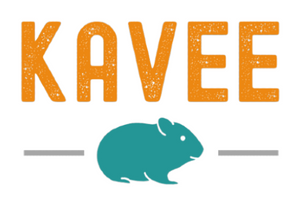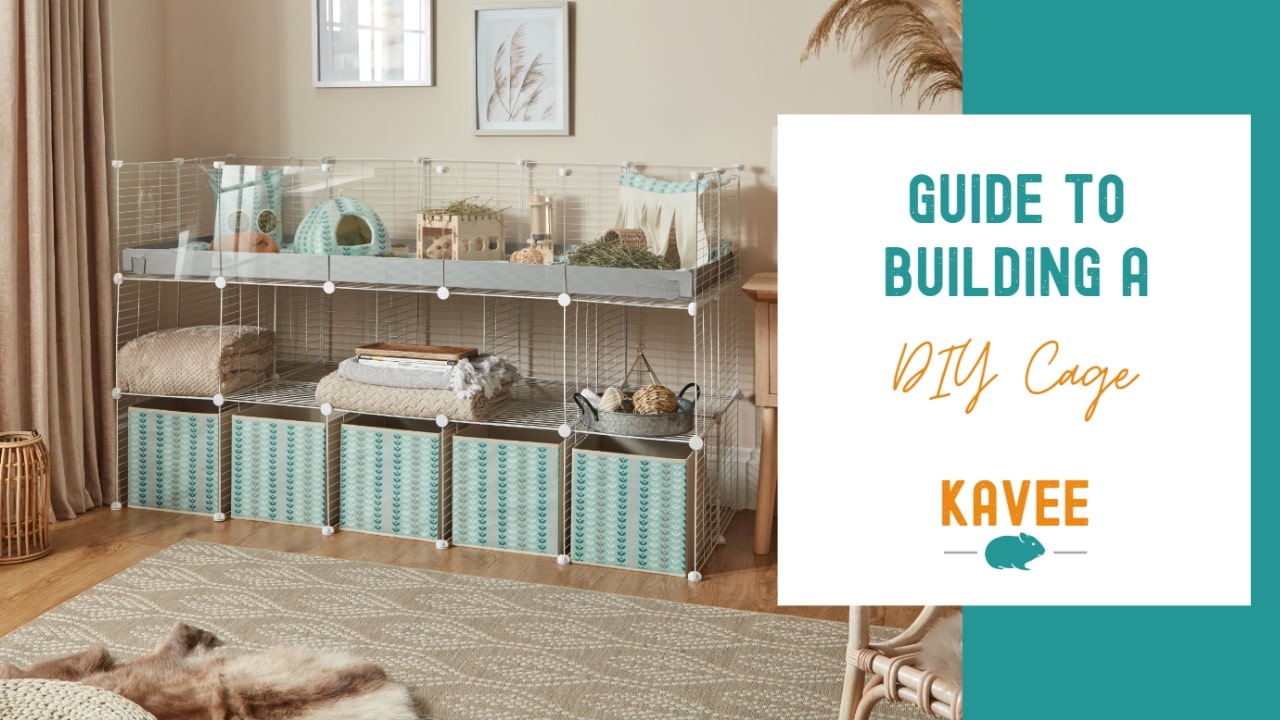By the time you’re ready to assemble your C&C guinea pig cage, it can feel like you’ve already run a marathon! From choosing the right sized cage for your piggies to deciding whether or not you want to add a ramp, lid, or stand to your piggy palace, there are just so many decisions to be made.
Don’t fret though! Once you’ve ordered your cage and bought all of the supplies you need to set it up, assembly will be a breeze with our handy guide to building a cage for your piggy. Whether you opt for a fuss-free Kavee kit or are a dab hand at DIY and would prefer to make your own, we’ve got everything covered below!
Make a List of What You Need
If you decide to buy a C&C cage from Kavee, then you don’t need to worry about how many grids you need or how big the correx sheets should be! This is because they contain absolutely everything you need: grids, coroplast sheet, cable ties, connectors, etc.
Alternatively, you could go the DIY route. To create your own C&C cage, you will need a few supplies before you get started. The below table will help you gather pieces for the most common sizes of cages:

If you are going for the DIY route, also plan for:
- Coroplast sheets
- Cage grids
- Cage grid connectors
- Duct tape
- Box cutter
- Cable ties
- Scissors
- Large ruler or measuring tape
- A pencil
- A ramp
- A lid
- A stand
Tip: If you can't find coroplast sheets that are big enough, please know that you can always merge two coroplast sheets!
Start Building Your Cage
Now that you have the materials required to create a C&C guinea pig cage and have selected the best size for your piggies, it's time to start building! There are many great resources online in order to help you construct your very own cage. In fact, Kavee has a Youtube channel filled with a variety of cage-building videos, for each cage size and model! Here is an example video for our 5x2 cage with a loft and a lid:
Connect your grids
Based on the shape and size that you have selected for your indoor guinea pig cage, you can start to plan the layout. You may find it helpful to draw a quick sketch of the cage to help you visualise it.
Place the connectors on the bottom of your grids first as you attach them together. When you are happy with the layout, you can begin attaching the top connectors together.
Mark your coroplast base
Kavee's correx sheets come already cut and scored, so if you have these then you can handily skip the next 3 steps. Simply check the below video on how to get your coroplast sheets ready.
If you have decided to go DIY with your correx, look at the diagram below for how to mark your coroplast sheet. Provided below are blueprints created for the most common cage sizes: 3x2, 4x2, 5x2, and 6x2 cages.
You simply need to mark out your measurements directly on your correx sheet. We recommend drawing your lines by marking your sheet in 1.9in (5cm) increments. This way, when you draw your line out, you connect all the dots evenly for a straight line! Start by drawing out the base measurements first, then, on each side of your drawing, draw out the height required to make the correx walls.

At Kavee, we recommend making the coroplast walls 7.6 cm (3in) tall so that your piggies have a view of the outside world. Of course, you can make your coroplast walls any height you wish, just be sure not to make them too short as you will want some height to keep in hay or other materials.
The above blueprints have been created with the intent of using a grid size of 35cm x 35cm (13.7in x 13.7in) and coroplast walls that are 7.6cm (3in) tall. If your grids or walls are bigger or smaller, these blueprints will need to be adapted.
If your desired cage size is not listed here, you can easily modify these plans to suit your requirements. Just remember to measure out your coroplast sheet based on the inner dimensions of the cage. You will need to ensure your measurement is taken from the edge of the connectors (if used) in order to ensure your base fits flat. Failing to measure from the edge of the connectors will result in a base that fits too tightly inside the grids or one that doesn't sit flat.
Cut your Correx sheet for your cage base
Before you start cutting your sheet, you should know that there are two ways to cut correx: either fully or halfway. Scoring it halfway allows you to bend the edges to create the walls.
Start by scoring your sheet as the image in the section above illustrates. You will want to ensure that you only score where the dotted line shows (use your box cutter to cut halfway through the sheet). Next, use your scissors to create the flaps on your base by cutting along the solid line.
Assemble your coroplast base
Now that you have cut your coroplast base, you are ready to start assembling. Fold along the scored edges to make the walls and then overlap the ends with the flaps that you have cut. Affix with tape to secure them in place.
Again, if you have selected Kavee's correx sheets, none of this is required and your coroplast will come pre-cut and ready to set-up in a flash.
Enjoy your new cage
Place your base inside your C&C grid perimeter and add your preferred bedding (check out our gorgeous and practical fleece liners). You can now make the all-important finishing touches to decorate your cage. Oh, and don’t forget to keep it spick and span with regular cleaning. Add your guinea pigs and enjoy watching them popcorn around their brand new pet palace!
Conclusion
Every piggy family is different, and we understand that while Kavee removes the need for complex DIY from building a guinea pig cage, some still prefer to take on the challenge of creating their own from scratch. So whether you go at it completely alone or pick some of Kavee's cage supplies, we hope that this guide has made it easier for you to get started building an indoor guinea pig cage.
If you're still unsure or have decided that this option isn't right for you, check out our cage size guide to find the best Kavee cage for your furry family in just 5 simple steps.








